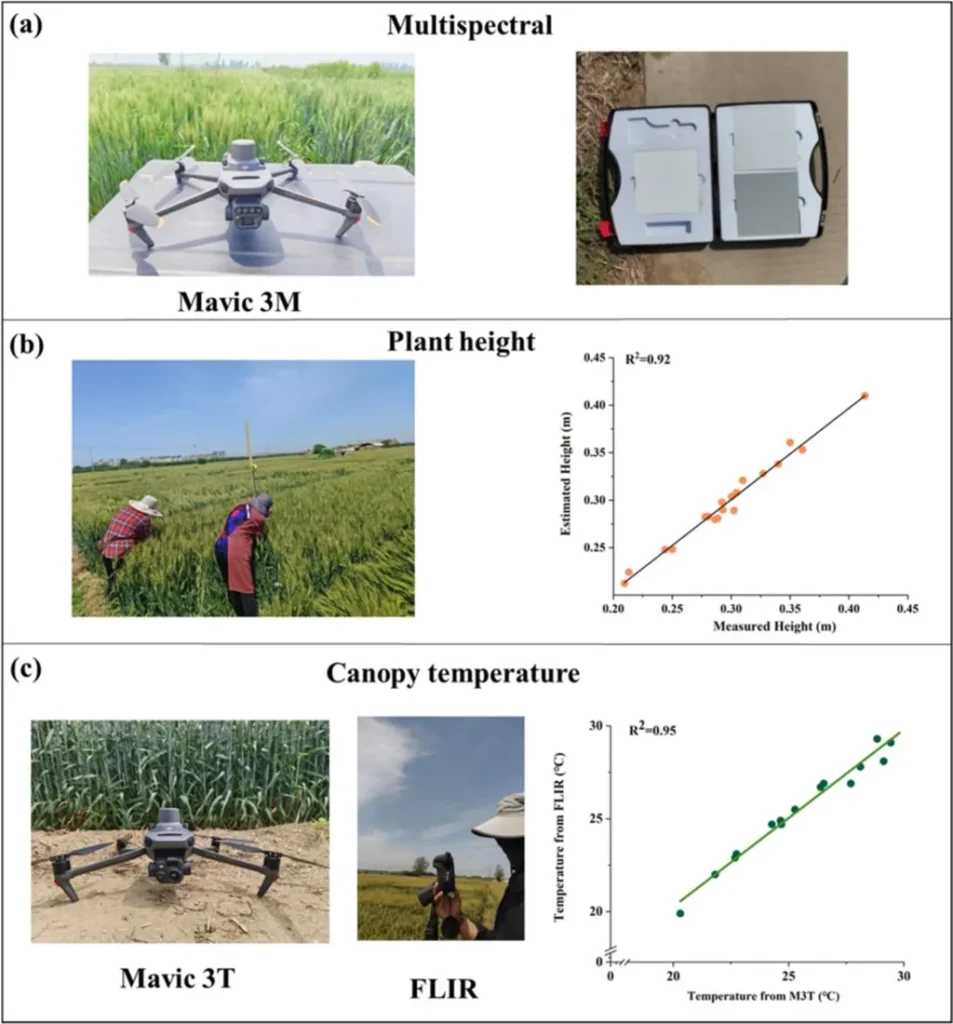In the face of climate change and water scarcity, ensuring food security is becoming an increasingly complex challenge. Rice, a staple food for over half the global population, is particularly vulnerable to drought stress, which can significantly impact yield. Traditional methods of screening drought-resistant rice varieties are labor-intensive and time-consuming, often relying on manual measurements that can be subject to human error. However, a groundbreaking study published in *Agricultural Water Management* offers a promising solution to these challenges.
Researchers led by Xin Wang from the Shanghai Agrobiological Gene Center and Hua Zhong Agricultural University have developed a standardized, high-throughput workflow for evaluating drought-resistant rice varieties using unmanned aerial vehicles (UAVs). This innovative approach not only accelerates the screening process but also enhances accuracy, potentially revolutionizing the way breeders identify and develop drought-tolerant rice strains.
The study introduces a novel method that combines UAV imagery with advanced machine learning techniques to assess leaf wilting and predict post-drought yield. “Our method allows us to screen desirable drought-resistant rice varieties at the early growth stage, drastically reducing the time and labor traditionally required for manual trait measurement,” explains Wang. This efficiency is a game-changer for the agriculture sector, where time and resources are often limited.
The researchers defined five levels of rice leaf withering and developed an efficient, automatic UAV RGB image processing software called PLOT ASSISTANT. By integrating manual measurements with UAV images, they constructed a leaf withering assessment model and a rice drought-resistance prediction model. The MobileNet model, which incorporates a spatial attention mechanism based on transfer learning, demonstrated the highest assessing accuracy, with an impressive R² value of 0.94 and a mean squared error (MSE) of 0.08. The rice drought-resistance prediction model, which introduces coordinate inverse projection, successfully screened the top 5% of drought-resistant rice varieties with the highest yield, achieving an F1 score of 0.95, a precision of 0.95, and a recall of 0.96.
One of the most significant aspects of this research is its applicability to complex populations, including Japonica, Indica, and median types between the two. This versatility makes the method highly valuable for breeders working with diverse rice varieties. Additionally, the study identified 1942 novel genetic loci associated with drought resistance, providing a wealth of data for future research and breeding programs aimed at enhancing rice’s resilience to drought.
The commercial implications of this research are substantial. By streamlining the screening process, breeders can more quickly develop and deploy drought-resistant rice varieties, helping to ensure food security in regions prone to water scarcity. The use of UAVs and advanced machine learning techniques also opens up new possibilities for precision agriculture, where data-driven decisions can optimize crop management and improve yields.
As climate change continues to pose threats to global food production, innovative solutions like this one are crucial. The research led by Xin Wang and his team represents a significant step forward in the quest for drought-resistant crops, offering hope for a more secure and sustainable agricultural future. With the potential to reduce labor costs and improve screening accuracy, this method could soon become a standard tool in the breeder’s toolkit, shaping the future of rice cultivation and food security worldwide.

